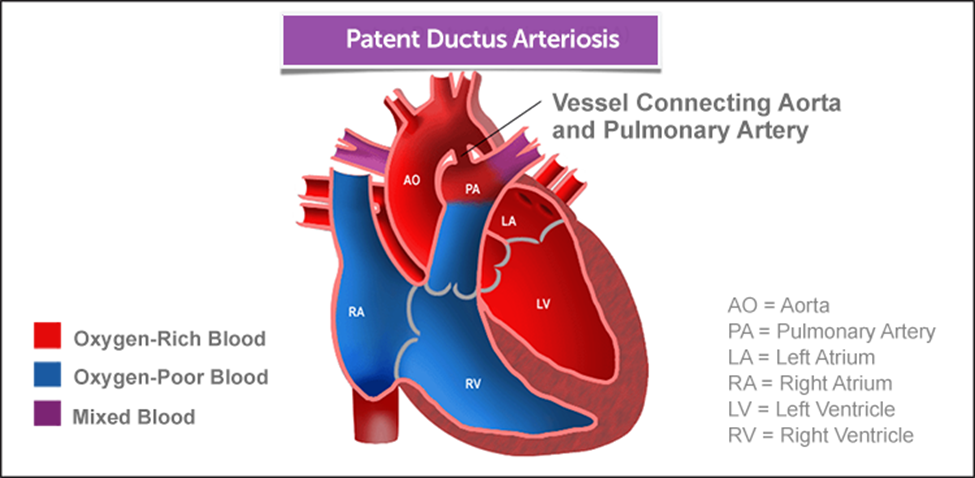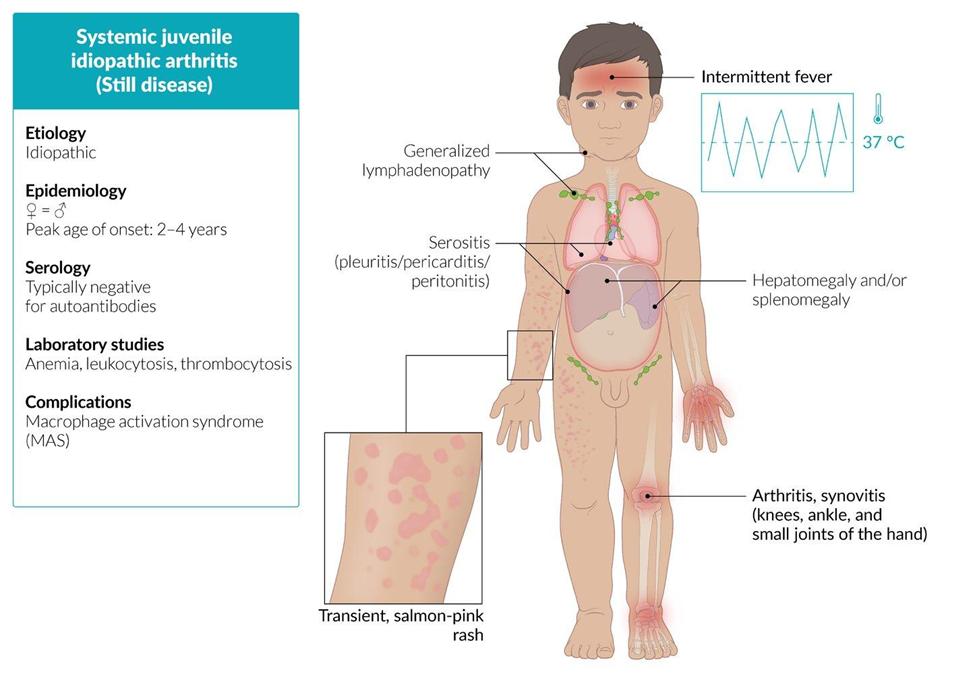The registered nurse is discussing care of an infant diagnosed with a patent ductus arteriosus (PDA) with a nursing student. The registered nurse determines that the nursing student needs further teaching regarding a PDA when the student states that which circulatory change is a characteristic of this disorder?
This shunting allows oxygenated and unoxygenated blood to mix.
Blood is shunted to the right side of the heart.
This shunting results in increased pulmonary blood flow.
Blood is shunted to the left side of the heart.
The Correct Answer is D
A. "This shunting allows oxygenated and unoxygenated blood to mix."
Explanation: This statement is correct. In PDA, the shunting of blood between the aorta and pulmonary artery allows oxygenated and unoxygenated blood to mix, leading to decreased oxygen saturation in the systemic circulation.
B. "Blood is shunted to the right side of the heart."
Explanation: This statement is correct. In PDA, blood is shunted from the left side of the heart (aorta) to the right side of the heart (pulmonary artery).
C. "This shunting results in increased pulmonary blood flow."
Explanation: This statement is correct. PDA leads to increased pulmonary blood flow as a result of the shunting of blood from the aorta to the pulmonary artery.
D. "Blood is shunted to the left side of the heart."
Explanation:
A patent ductus arteriosus (PDA) is a congenital heart defect where the ductus arteriosus, a fetal blood vessel that normally closes shortly after birth, remains open. In PDA, blood is shunted from the aorta (left side of the heart) to the pulmonary artery (right side of the heart), resulting in increased pulmonary blood flow. Therefore, the correct statement is that "Blood is shunted to the right side of the heart."

Nursing Test Bank
Naxlex Comprehensive Predictor Exams
Related Questions
Correct Answer is A
Explanation
A. Administer prednisone on an alternate-day schedule.
Explanation: Prednisone, a corticosteroid, is often prescribed to manage inflammation and symptoms in juvenile idiopathic arthritis. An alternate-day schedule helps minimize the risk of side effects associated with prolonged corticosteroid use.
B. Apply cool compresses for 20 minutes every hour.
Incorrect: While cool compresses can provide relief for joint pain associated with arthritis, applying them every hour may be excessive and is not a standard recommendation. It's important to use cooling measures judiciously.
C. Encourage the child to take a 45-minute nap daily.
Incorrect: While adequate rest is important for overall health, suggesting a specific duration for a nap may not be universally applicable. The child's need for rest and sleep should be based on individual factors, and a specific time frame is not a standard recommendation for juvenile idiopathic arthritis.
D. Allow the child to stay at home on days when her joints are painful.
Incorrect: While it's important to consider the child's comfort and well-being, keeping the child at home solely on days of joint pain may not be necessary. The goal is to manage symptoms effectively to allow participation in normal daily activities, including school. Restricting activities solely based on joint pain is not the typical approach to managing juvenile idiopathic arthritis.

Correct Answer is C
Explanation
A. 9 months: By 9 months, most infants would have well exceeded doubling their birth weight.
B. 12 months: Doubling of birth weight usually occurs earlier, by around 5 to 6 months, rather than 12 months.
C. 6 months
Explanation:
The general guideline is that infants tend to double their birth weight by around 5 to 6 months of age. This doubling of birth weight is a common marker of healthy growth and development during the first few months of life.
D. 3 months: By 3 months, while infants experience significant growth, they usually haven't doubled their birth weight yet.
Whether you are a student looking to ace your exams or a practicing nurse seeking to enhance your expertise , our nursing education contents will empower you with the confidence and competence to make a difference in the lives of patients and become a respected leader in the healthcare field.
Visit Naxlex, invest in your future and unlock endless possibilities with our unparalleled nursing education contents today
Report Wrong Answer on the Current Question
Do you disagree with the answer? If yes, what is your expected answer? Explain.
Kindly be descriptive with the issue you are facing.
